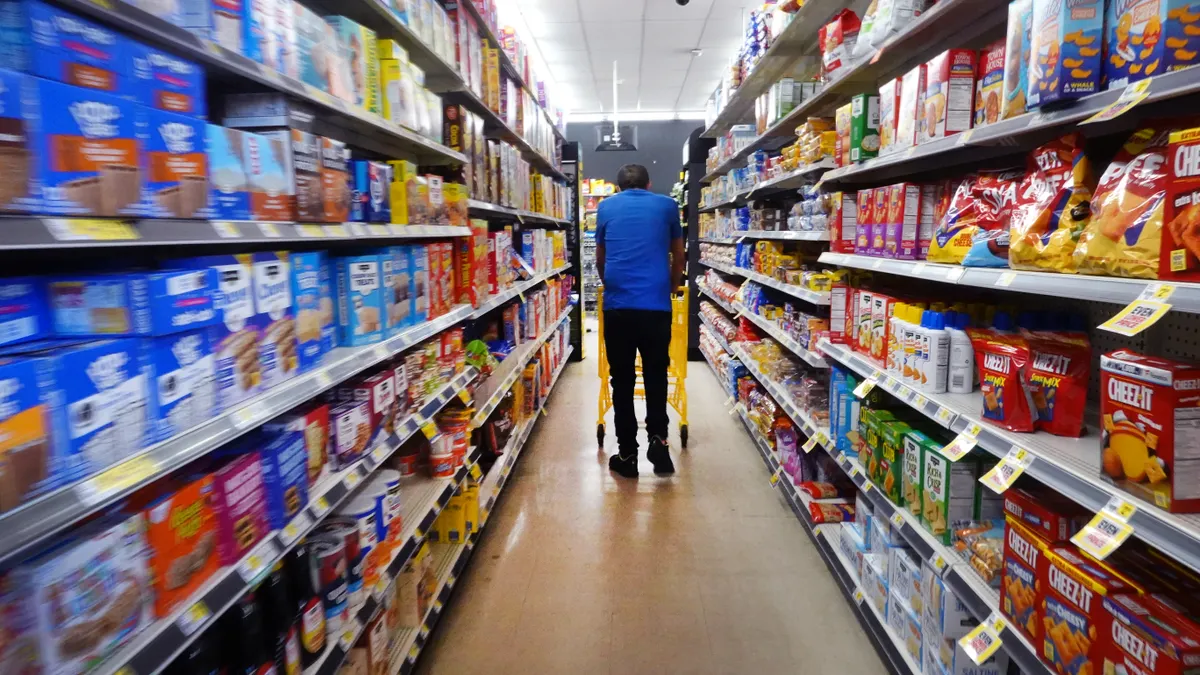As summer draws to a close, the Bureau of Labor Statistics prepares to release July Consumer Price Index (CPI) 2025 on August 12 — a key data point that could influence Federal Reserve policy and market expectations. Meanwhile, the Cleveland Fed’s most recent nowcasts estimate July’s headline CPI at 2.72% year-over-year and core CPI at 3.04%, offering a preliminary glimpse into price dynamics when official numbers arrive.
These figures tell a nuanced story: inflation remains above the Fed’s 2% target but shows signs of moderating in headline metrics. Core inflation remains elevated, largely due to shelter and services costs, and a range of other categories still climbing—even though goods pricing pressures have eased.
This report explores the meaning behind these numbers, diving into sectoral trends, drivers like tariffs and energy price shifts, evolving expectations around Fed action, and what these trends mean for procurement, supply chains, and strategic planning. We’ll also include a brief closing insight from Mattias Knutsson, highlighting why procurement strategy must evolve in a persistently inflation-elevated environment.
July CPI 2025 Nowcast: Inflation Moderates But Remains Elevated
The Cleveland Fed’s nowcast model anticipates the trailing 12-month headline CPI at 2.72% and core CPI at 3.04% for July 2025. These estimates suggest a slight deceleration from June’s 2.7% headline reading and 2.9% core rate, though core inflation may tick upward modestly due to lagging shelter legacies and stickier service costs.
If confirmed, July’s numbers reflect a steady disinflation path—headline cooling modestly—but underline why core inflation remains sticky. The divergence influences both consumer sentiment and Fed policy signals, which increasingly hinge on whether inflation is truly dissipating or simply masking underlying price pressure.
What’s Driving the Trends: Energy, Food, and Shelter
Energy and Food Trends
Energy prices have moderated: gasoline remains approximately 8% lower year-over-year, contributing to a ‑0.8% yearly energy inflation rate, even as monthly energy costs rose 0.9% in June. Food prices continue a slow climb: in June, food inflation stood at about 3.0% annual, with food away from home climbing nearly 3.8%—signaling persistent pressure in restaurants and grocery sectors.
Shelter and Core Services Resilience
In contrast, core services inflation—especially shelter components like rent and owners’ equivalent rent—remained elevated at 3.6–3.8% annually. Medical services and recreation costs also climbed, albeit more moderately, supporting a core CPI rebound to around 3.0%. These sectors tend to move slowly and exert steady upward pressure.
Tariffs and Import Price Pass-Through
A resurgence of Trump-era tariffs in mid-2025 is leaving an imprint on goods prices: core goods inflation (excluding food and energy) rose 0.5% in June—highest monthly climb since 2022. Even if core inflation edges higher in July, goods pressure may fade in coming months as tariffs settle into inventory pipelines and supply chains adapt.
Still, consumer appliance prices rose 1.9% in June alone, along with hikes in categories like sports equipment and toys—indicating tariff effects have started reaching retail shelves.
Federal Reserve Outlook: Patience May Prevail
Despite soft headline numbers, the Fed is likely to remain cautious. According to market sentiment communicated after June CPI and employment softness, expectations for a September rate cut remain subdued, with greater confidence in easing arriving only in autumn if inflation shows durable moderation.
Indeed, economists in The Wall Street Journal’s July survey estimated recession odds at about 33% over the next year—down from earlier concerns but still prominent—suggesting the Fed will hold off until data aligns clearly with the inflation trajectory it needs.
Sectoral Impacts: How Consumers and Businesses Feel It
Food and Utilities Pressure
Despite broader softness, consumers are still paying higher food prices—especially in restaurants—and face rising electricity and gas costs (noted at 14.2% annual rise in utility gas service), driving inflation fatigue among lower- and middle-income households.
Goods vs. Services Split
Used cars, new vehicles, and airline fares declined slightly in June, reflecting stabilizing goods inflation. But service categories—especially accommodation and medical services—continued modest upward movement, keeping inflation entrenched for many families.
What It Means for Procurement and Supply Chain Strategy
With inflation still elevated, procurement leaders must evolve strategies. Rising input costs, uncertain price pass-through, and volatile demand make fixed supplier contracts risky.
Mattias Knutsson, Strategic Leader in Global Procurement and Business Development, emphasizes:
“Inflation isn’t just macro‑economic—it’s operational. Procurement now must navigate input volatility, renegotiate supplier terms, and build inflation-indexed contracts. In a world where price expectations hover above 3%, resilience and flexibility are procurement’s top currencies.”
Adapting includes building deeper supplier relationships, monitoring pricing indices continuously, and hedging exposure where possible.
Forecast: What August and Beyond Might Show
If July’s nowcast holds, inflation continues decelerating—but not fast enough to clear the Fed’s threshold for action. By August and September, markets will watch closely:
- Shelter inflation should gradually slow, assuming housing inventories normalize.
- Goods inflation may cool as tariff pass-through fades.
- Services—including medical and recreation—might hold at 0.2–0.3% per month but could soften if consumer demand weakens.
Failure to record sub‑2.5% core CPI in coming months could push rate-cut expectations into late 2025 or early 2026. On the other hand, a sharp drop could shift sentiment rapidly.
Conclusion
July’s CPI data—both nowcast and preliminary BLS June figures—paint a cautious but not cheerful picture. Headline inflation hovers around 2.7%, core inflation remains elevated near 3%, and key cost pressures in housing and services persist.
This balance suggests a transition phase: inflation is moderating but not yet tamed. The Federal Reserve is likely to sit tight until consistent data shows durable softening—especially in core services and rent inflation.
For consumers, rising food and utility costs continue to pinch family budgets. For businesses—especially in procurement and supply chain management—these trends underscore the importance of adapting to price uncertainty, indexing risk, and demand volatility.
In sum: July’s CPI suggests the disinflation path continues—but gravity remains. The next few months may define whether inflation retreats toward stable ground—or lingers in the uneasy zone above 2%.




